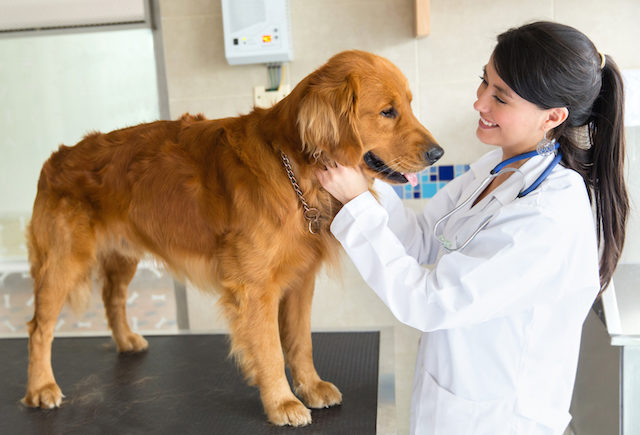Are you a cat person or a dog person? If you’re a cat person, this one might be a struggle for you. Although, to be fair, there are a lot of cats out there aren’t there? Maine coon, Tonkinese, Russian Blue; but for our purposes we’ll focus on dogs today.
The American Kennel Club recognizes 200 different breeds of dog. However, they acknowledge that there are 340 different breeds around the world. If you’re curious, there are at least 73 recognized breeds of cat, but the official designations and recognition for cats is a little less intense and rigorous than it is for dogs.
Now, try to imagine any other animal you can think of. How many breeds of giraffe do you think there are? What about chimpanzees? Hell, what about humans? There may have been over 21 species of human once, but that’s not really the same thing. Plus, compared to 340 breeds, it’s still pretty paltry.
Breed and species are definitely not the same thing. A breed is a specific group within a species that was engineered, or bred, towards certain characteristics. That’s why a Chihuahua can mate with a Maltese. A doberman can mate with a German Shepherd. They are all, truly, the same species. It’s just that many years of careful breeding has focused on bringing out specific characteristics in each that make them look wildly different. This is not something that happens in the wild where speciation may occur as part of the evolutionary process and one species eventually branches away from another.
Even knowing that, the number of dog breeds is rather staggering. Only the horse is more diverse, with over 400 breeds and some sources citing close to 800, but they were used for far more tasks than dogs ever were.
Dog Domestication

All dogs wagging their tails and being the best boys and girls in the world today trace their roots back to the same species of now-extinct wolf closely related to the modern gray wolf. Genetic tests confirm this.
As for when dogs were domesticated, that’s a little more of a complicated question to answer. Some sources would suggest about 15,000 years ago. But there is some evidence that it could have been as far back as 40,000 years ago. And there is evidence that wolves could have started on their journey to becoming full-fledged dogs as far back as 130,000 years ago. That means while we were getting to know our canine companions, it’s entirely possible that Neanderthals were as well.
While the official date of domestication remains up in the air, so too does the location. In fact, there is some evidence that dogs might have been domesticated two times, in two totally different places. Once in Asia and once in Europe. This is by no means agreed upon in the scientific community, however. Others have found evidence that Europe is the soul location of domestication.
Genetic evidence suggests that dogs came to North America when humans did, over 10,000 years ago across the Bering Strait. Many of these dogs of Asian origin were bred out by European stock when Europeans arrived and colonized the land, however, some still remain. In particular, this genetic history can be found in species like the Peruvian hairless and Xoloitzcuintli.
Breed Differentiation

The breeding of dogs is a very old practice. As we mentioned before, there are numerous breeds of horses, so humans have had a history of breeding animals for specific purposes. We have draft horses, racehorses, show horses, and so on. Mankind has long understood that you can take two animals that have characteristics you like, breed them, and get offspring that will also have the characteristics you want.
Dogs were likely originally bred for hunting, for protection, and for herding before much else. Over the centuries, these dogs were bred into more specific groups, which is why today we have sheepdogs, collies, Aussies, and more that are all herding dogs, but all visually diverse.
Dogs have been bred for herding for a long time in a number of places. While herding dogs are all meant to do the same thing, their genetics can actually be quite diverse. It seems like they might all come from the same place, but evidence has shown that’s not true. And, in fact, not all dogs heard the same way. Some have been bred to be very independent and live with the herd that they are looking after. Others are far more dependent on their human companions. The methods and strategies these dogs use vary considerably, indicating that the breeds came into existence separately from one another via different methods.
While working and hunting dogs can trace their origins back quite far, the majority of dogs have only been around since the Victorian era. Dog breeding really took off during that time, and not all of the bred dogs were intended for work. Darwin and his theories were cutting edge, and Victorians were enthralled by the idea of natural selection. They wanted to try their hand at breeding the traits they sought out specifically.
The Effects of Breeding

The effect of selective breeding can actually be seen through documentation. Several sources on the internet have compared images of dogs from 100 years ago to modern times. The difference in the way breeds look can be dramatic. Bull terriers were almost unrecognizable a century ago compared to today’s standards. Modern pugs and Boston terriers have much flatter noses, which can cause serious health problems for the animals. Modern Shetland sheepdogs are almost twice as big as they were a century ago.
All of these changes were conscious choices by breeders, and now, in our time, they are expected characteristics whether they are beneficial or harmful to the breed. Where in the past dogs were bred for a purpose, for work, these modern dogs have often been bred just for an aesthetic with little concern for the dog itself. Some dogs will have physical health problems ranging from bone disorders, breathing problems, and poor eyes to behavioral issues like aggression as a result.
Another issue with this selective breeding, especially as it relates to what people consider purebreds, is a lack of genetic diversity. This can mean that, going forward, dogs that are too closely related genetically will continue to exacerbate the health concerns in the next generation if the genetics aren’t altered. This is one of the many reasons why some people consider it better to adopt dogs from shelters rather than pay for puppies from breeders, not to mention that dog breeding can often be a cruel and grueling process for dogs involved that are forced to continuously breed.
How Come Different Breeds Are Still the Same?

The great diversity in dog breeds presents a problem insofar as reproduction is concerned. Because all dogs are genetically the same species, they can reproduce with one another. That doesn’t sound like an issue until you look at a chihuahua and a Great Dane. Scientifically speaking, there is no reason those two dogs can’t mate. But practically speaking, that could be catastrophic, especially if the chihuahua is female. It may not even be possible for a female chihuahua to carry puppies from a Great Dane, so trying to breed them intentionally would be extremely unethical and cruel.
Even if the logistics of the actual act worked out, the offspring would be potentially very unwell. The resulting puppies could have any number of unexpected health issues. This could range from physical issues caused by the three differences to serious behavioral issues.
The reason this pairing is still a potential success, on a genetic level, is because there is no real difference on a genetic level. Breeding of dogs is not unlike engineering apples. A farmer might cross-pollinate two sweet kinds of apples together to make one new, ultra sweet apple as a result. The new fruit is still an apple, of course.
Is it possible that dog breeds could one Day become their own distinct species? Different the way red wolves and gray wolves are different? Never say never, but it’s not likely. It takes hundreds of thousands of years for mammals to evolve into separate species from their closest cousins. Remember, Neanderthals and homo sapiens, that’s us, were both human. We could successfully breed with them, and in fact, we did.
For a breed of dog to become a new species it would need to be isolated from all other dog breeds for tens of thousands of years and undergo the process of evolution, mutation and adaptation until it was sufficiently different, on a genetic level, from other dogs to qualify as something new. Our intentional breeding has changed the dog’s phenotype, which is the way it looks on the outside, but the genotype, essentially what it is on the inside, is the same.
Why Are There More Dogs Than Cats?

So, if you cat people are still around, you may be wondering why there are so many more kinds of dogs than cats. If only a few dogs were bred for work purposes, and so many more were bred just for Aesthetics, why do they still outnumber cats so much?
Also, regardless of the numbers, why are dog breeds so physically different while most cat breeds look pretty much the same? You have to admit that the differences between cat breeds are fairly minor. If you were to look at a Siamese, a Persian, a sphinx, and a Maine Coon, it’s unlikely you would think they were completely different animals. However, if someone’s first experience with dogs was looking at a Great Dane, a Chihuahua, a pug, and a greyhound, there might be some questions about whether these were all the same animal or not.
First, it’s unlikely that cats have been human companions as long as dogs. Evident suggests cats were domesticated about 10,000 to 12,000 years ago. The breeding of dogs has been taking place for thousands of years to get those Hunters, herders, and guard dogs we talked about. Cats were not bred for much, specifically until the last century or so. And even then, we were just reading them for Aesthetics, not for work. As a result, there’s great diversity in what dogs look like because they have different purposes.
Cats- no insult intended – have no purpose. Maybe as a barn cat, or a Mouser, but you don’t really need specialized skills or physique as a cat to do that. Basically, dogs are more useful than cats, so we have more breeds of them.
The psychology of cats and dogs is also different. Cats are notoriously independent. People often joke about how they don’t listen to their owners at all. That is true, by and large, however. And that means breeding them for specific purposes is not necessarily ideal.
Dogs, on the other hand, come from wolves. Wolves are pack animals and are used to working in groups. There used to be lead, even in the wild. They have a genetic predisposition to following directions, and that made them ideal as companions for humans. The earliest humans were able to recognize that dogs would respond to commands in certain circumstances, and their willingness to please and their intelligence made them a logical choice to work with.
All of that said, it’s worth noting that there are the rare cat breeds out there that break the mold. The Savannah cat, for instance, was bred from serval cats and domestic cats. The result is a much larger than typical animal. A healthy Savannah cat could still weigh up to 30 pounds. A normal house cat typically weighs 8 to 12 pounds. So there is a bit of creative breeding going on with cats, making giants like Great Danes, but it is far rarer, and there aren’t a lot of other breeds that fit the bill besides the Savannah.